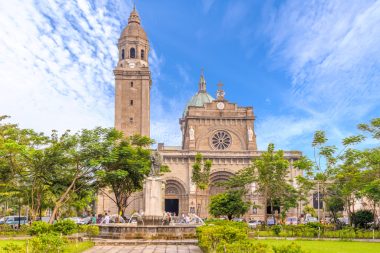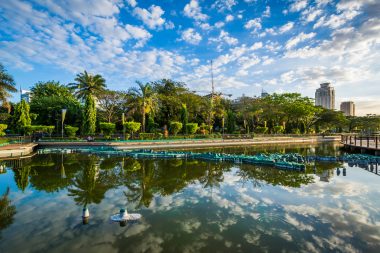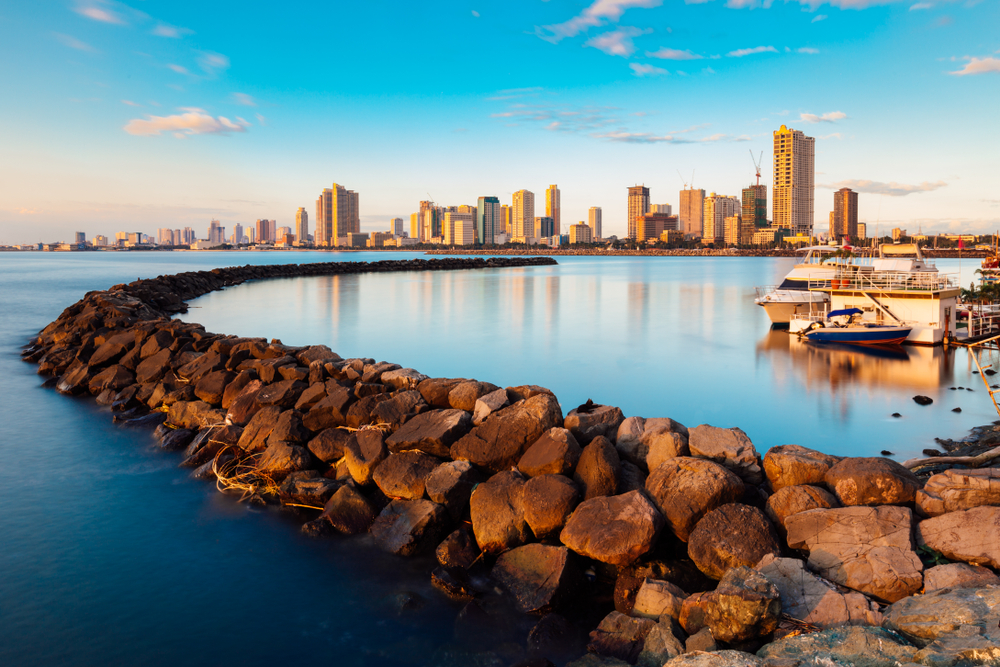If you have chosen the paradisiacal beaches of the Philippines as the destination of your long-distance trip, you can’t avoid Manila. And the holidaymaker enters historic ground in the capital of this island state, because on many corners of Manila you can discover the traces of the former conquerors on closer inspection. Twelve million people live here, and anyone who steps out of their posh hotel onto Roxas Boulevard, which spans Manila Bay like the crescent of the moon, is entering one of the liveliest metropolises in Asia. Although the juggernaut gives you a taste for the idyll of the more than seven thousand islands of the Philippines, this city with its peculiarities and countless neon lights at night is also worth more than just a flying visit.
A story as good as the Manila Hotel

You should decide to visit Intramuros. This can be translated as “within the walls” and promises tourists an encounter with the city’s colonial past. Although not much remains of Manila’s historic core, the former Spanish splendor can still be seen in the San Augustin Church and in the remains of the city’s fortifications. The old town on the Pasig River was reduced to rubble and ashes when the Americans drove the Japanese occupiers out of Manila in 1945. But a visit to the venerable Manila Hotel should also be on every visitor’s “to-do list”. The house looks like a relic from long-forgotten times with a touch of the feudal past. Ernest Hemingway, the well-traveled genius author, is said to have once said: “A story is good if it is like the Manila Hotel”. There is nothing more to say about it…
The suffering and death of the national hero Rizal
This posh hostel, the flagship of the Philippine metropolis, is located on the edge of the former old town and thus not far from Rizal Park, which the inhabitants consider the real heart of the metropolis. If it’s true that Manila suffers from a chronic lack of green zones, then this park is an exotic oasis. Above all, however, this is a historic place, because the Filipino freedom fighter José Rizal was executed there on December 30, 1896. His suffering and death play an important role in the history of this country, because they triggered the Philippine revolution after his martyrdom. In the park, the monument to the national hero is constantly guarded by security forces.
A cemetery with mailboxes and air conditioning
If you want to travel cheaply and true to the original in Manila, you should use a jeepney. The ride in a shared taxi is affordable and costs less than two pesos per kilometer. However, the drivers cheat every now and then with their manipulated taximeters. Earthquakes and wars hit the historic Manila Cathedral more frequently. It is the seat of the archdiocese and presents itself in the style of neo-romanticism. Anyone who attends a service there will be surprised at the fervour with which the people of this city indulge in their faith there. And weddings are the great holidays in the life of every Filipino. Although not every holidaymaker is inclined to visit a cemetery as part of their trip, the Chinese burial sites should not be missed in Manila. Here, memorials of the deceased were created – some with mailboxes and air conditioning.
Exhibits from early culture to the present day

The Robinson Place Mall is a paradise not only for shoppers of this city. Over five hundred shops and restaurants are located here in a relatively narrow space behind a historic façade. The selection in the shops is downright gigantic. And if you’ve had enough of strolling, you can look forward to Casa Manila. Originally, this house was built around the middle of the 19th century, and today it shows itself in the style of colonialism on General Luna Street. It is a replica of the times when the conquistadors from the European south made themselves at home here. Where the remains of the former fortress of Fort Santiago can be seen today, the palace of King Rajah Sulayman once stood. Today, this building is a museum. Art and culture come together in the National Museum on Padre Burgos Avenue. The spectrum of exhibits on display there ranges from early culture to the art of the time.
After the incorporation, “Metro Manila” was created
Without a doubt, Manila is a city full of contrasts. With endless traffic jams on the streets around the Makati business center, with numerous skyscrapers – but also with many surprises. After several suburbs have been incorporated, the mixture of draughty huts and pompous palaces is called “Metro Manila”. The historic districts were increasingly sidelined, but here and there the charm of the old city has remained. Not only in the fine villa district, but actually everywhere where people go about their daily business under the starry sky of neon lights.
Können wir Ihnen helfen?
Benötigen Sie Unterstützung bei Ihrer Reiseplanung oder weitergehende Informationen zu einzelnen Reisezielen? Wir freuen uns über Ihre Kontaktaufnahme.


